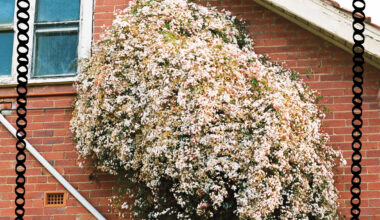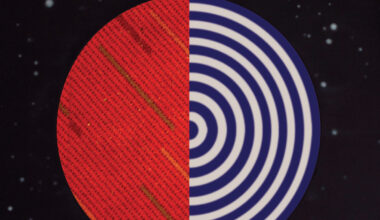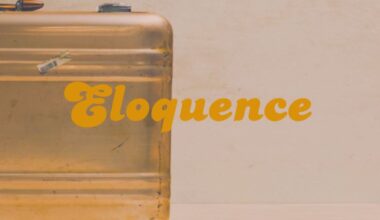Sunday chat to 3D spectacular
As this year’s Bluedot theme is “Space Carnival”, some of the intergalactic goings-on are inevitably centred on ‘Doctor Who’. The revered BBC sci-fi series celebrates its 60th anniversary this year, and there are a host of ‘Who’-related performances, screenings and talks going on, curated by the folks at Delia Derbyshire Day and comedian/‘Who’ expert Toby Hadoke.
In the Notes tent, Hadoke himself hosts an informal ‘Doctor Who’ chat entitled ‘Why do we love this silly programme so much?’. The answer, you won’t be surprised to learn, is far from simple. A panel of ‘Who addicts – Hadoke, writer Simon Guerrier, musician/academic Tom Attah, and postdoctoral researcher Emma Alexander – find themselves exploring, cogitating and going full geek on a panoply of ‘Who’ topics, and the sparky, timey-wimey conversation bubbles along at a fair old pace.
The programme’s appeal is rooted in “nostalgia, familiarity and visual cues”, we’re told (everyone knows what Daleks and the TARDIS look like), while Hadoke describes classic ‘Who’ as “teatime entertainment about blowing up monsters”. Tory MP Penny Mordaunt is a huge fan, he tells us, but the best moment comes from Attah. With a cheeky glint in his eye, he says – to paraphrase – “Suella Braverman doesn’t like ‘Who’ because you’ve got this guy from Rwanda [incoming Doctor Ncuti Gatwa] who can go anywhere he wants in time and space”. Cue loud applause.
A quick hop over to the Star Pavilion next, for a presentation about the making of the original ‘Doctor Who’ theme in 1963, with golden contributions from the Radiophonic Workshop’s Dick Mills – who worked with Delia Derbyshire on that landmark score – and Mark Ayres. The story has been told countless times before, of course, but it’s always a pleasure to hear Mills recounting those halcyon days of electronic experimentation, as Ayres demonstrates the various layers of that first ‘Who’ theme in forensic detail.
Delia’s groundbreaking work, he says, was essentially “proto sampling using tape machines, and working purely on instinct”. It’s astonishing to think all that happened 60 years ago, and from such humble beginnings. According to Mills, those inaugural “short, thrilling adventures” of the 1960s were only designed to “fill a gap in the Saturday evening schedule” and hold the viewing audience after the football results had been read out. Remarkable.
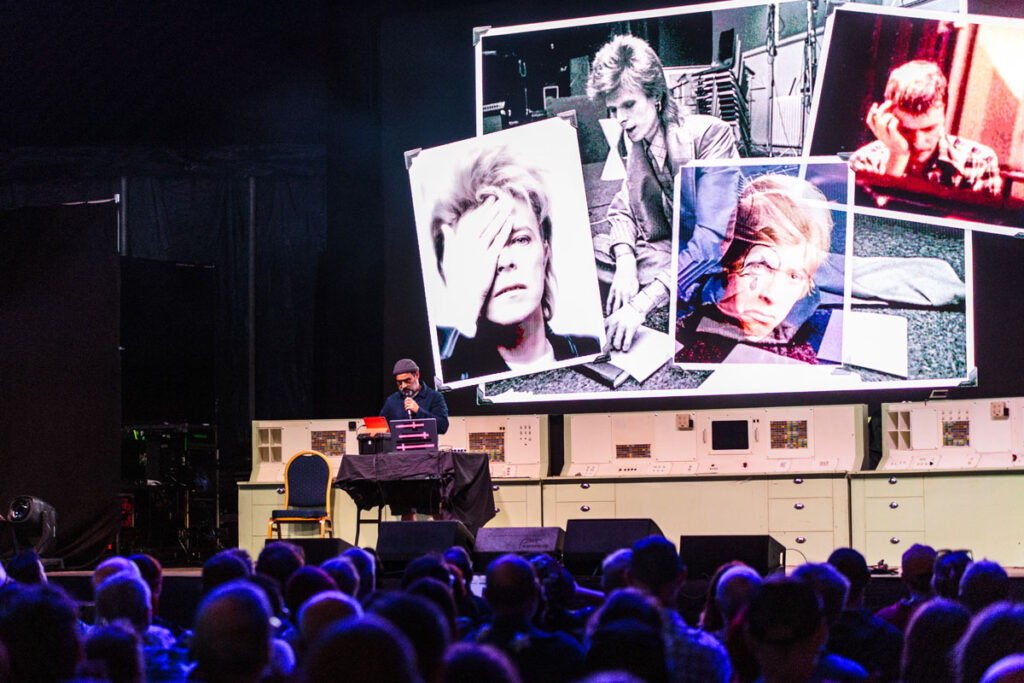
Later, over at Mission Control, a special David Bowie edition of Adam Buxton’s Bug incorporates a selection of the Thin White Duke’s music videos, performances, rare clips and animations, hilariously and affectionately reinterpreted. A Bowie obsessive, Buxton’s splendid impersonation gets the diction spot-on (“Wuzza, wuzza, wuzza”) as he puts his own quirky spin on Bowie lore. If you’ve seen his fabulous skit of Bowie in the studio with Brian Eno and Tony Visconti – animated by creative duo The Brothers McLeod – you’ll know what to expect.
In the 1970s, he says, Bowie consumed “more than the recommended daily amount of cocaine”. We get to see the surreal personas he created for the ‘1. Outside’ concept album, like a “one-man ‘Fast Show’”. There’s the hugely awkward 1975 Russell Harty interview (“Great bants!”). And another expertly animated Brothers McLeod sequence depicts the seminal “cunt in a clown suit” moment – just Google it – from Bowie’s iconic ‘Ashes To Ashes’ video shoot.
Bowie YouTube clips come with gloriously unhinged comments from the online community. On Bowie’s final video, ‘Lazarus’: “Farewell, the Ziggie star dust [sic]. Don’t approve this kind of death”. And on ‘Let’s Dance’: “Ironically, this is the worst song to dance to”.
A wonderfully offbeat homage, for sure, but strangely bittersweet. It’s still harrowing to see Bowie looking so ill and frail in the ‘Lazarus’ video, as he retreats into a wardrobe, never to be seen again. Watching on, Buxton sits and gazes at his hero as adoringly as the rest of us.
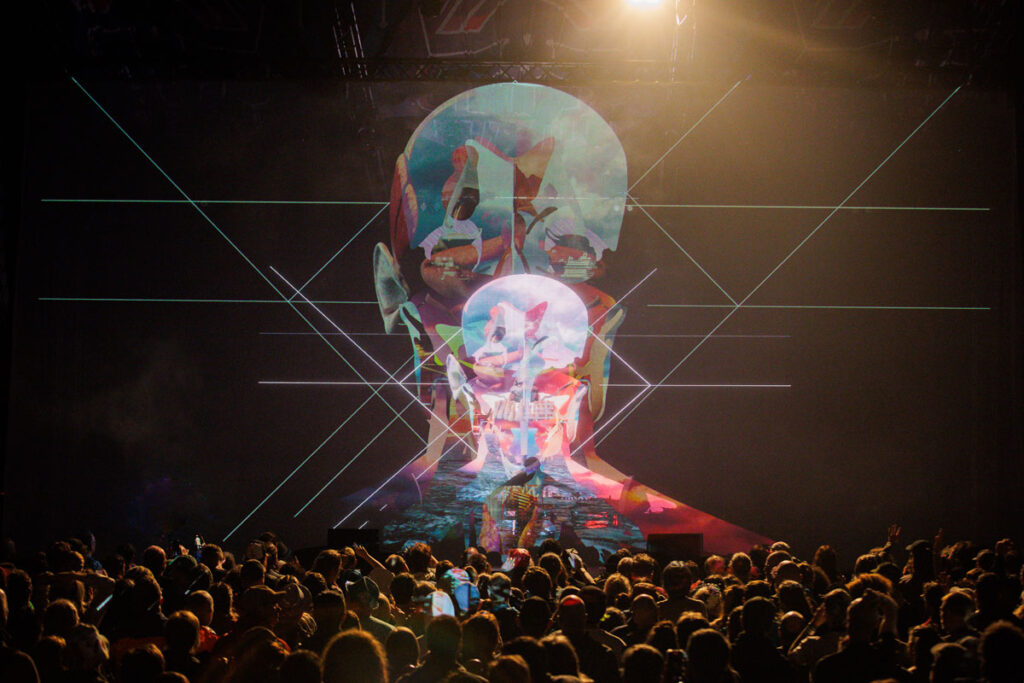
Back in the Orbit stage as night draws in, producer Max Cooper’s epic 3D/AV set attracts the electronic die-hards. Although taking place at the same time as Sunday night headliner Grace Jones, he’s pulled in a sizeable crowd.
Cooper’s work is all about “sensory immersion”, and we certainly get that in spades here. Exploring “humanity’s place” in our chaotic world, a series of complex, abstract and hallucinatory animations and graphics are projected onto a giant gauze mesh screen, as juddering techno blasts from the speakers. Twisting geometric shapes, flora and fauna, amorphous objects and errant infographics come and go. Cut-up phrases, texts and statements flash and pixellate in a Squarepusher stylee. It’s a mighty explosion of colour and sound, like the universe is fragmenting before our very eyes.
The techno gets louder, tricksier and more clattery – think Aphex/Leftfield/early Warp – as pounding mechanised bangers exhort us to dance. Suddenly, we’re taking off and soaring above grainy, collaged cityscapes. The sheer mind-bending array of imagery is astonishing… quite the trip.
At the end, Cooper slows the tempo right down into lush, cinematic ambience. It’s been a blast. After 90 exhilarating, life-affirming minutes, my brain cells are blissfully numbed and fried, as if I’ve undergone some form of divine religious conversion. If Kraftwerk’s ‘Computer World’ aesthetic had evolved musically and visually, this is how they might sound today. Max Cooper could well be their heir apparent.

